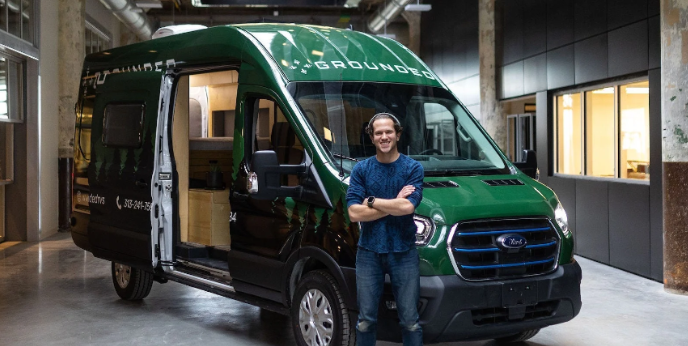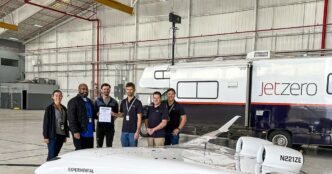As the Pentagon accelerates plans for next-gen aerial defense, U.S. drone startups are finding themselves caught in a tough bind—building drones to counter China’s military rise while still depending on Chinese-made parts to get the job done.
China’s dominance in the commercial drone market is hard to ignore. It controls nearly 90% of global production, manufacturing most of the airframes, batteries, radios, cameras, and screens that power the industry. For drone startups trying to supply the Pentagon, that’s a serious problem.
Drone Startups Face Supply Chain Snag in Race to Arm Pentagon
Under the Pentagon’s ambitious Replicator initiative, thousands of small, affordable drones are slated for deployment by 2025. Inspired by Ukraine’s wartime drone tactics and aimed squarely at countering Chinese military capabilities, this plan depends heavily on the agility of American drone startups. But many of these firms—despite big contracts and even bigger ambitions—are still using Chinese components in critical areas of their systems.
Startups like Skydio, Mach Industries, and Neros, backed by firms such as Andreessen Horowitz, have secured Pentagon support. Yet when Mach unveiled its Viper strike drone in a flashy promo, eagle-eyed viewers noticed it featured an engine suspiciously similar to a Chinese model. CEO Ethan Thornton initially denied it, but later admitted the engine had been used in testing. He insisted that final production units would be free of Chinese parts.
The admission sparked questions from within the industry. Anduril founder Palmer Luckey, a major player in defense tech, publicly challenged the origin of other components—pointing to how deeply entrenched Chinese hardware remains even among top-tier drone startups.
Can U.S. Drone Startups Break Free from Chinese Hardware?
Forbes reports that up to 80% of the critical components in many U.S. military drones—batteries, motors, cameras—still come from China. In 2024, China sanctioned Skydio, cutting off battery shipments and forcing the company to ration its stock. Even Senator J.D. Vance was spotted using Chinese-made drone goggles during a military demo, showing just how widespread this dependency is.
Other drone startups like Orqa have seen orders paused after banned parts were discovered in their systems. Orqa’s CEO openly admitted that most Western drone companies still rely on Chinese components, though his company has since shifted production in-house.
The Defense Innovation Unit (DIU) has tried to solve the issue with its Blue UAS certification program. It clears drones that avoid banned components—but the process is anything but simple. In 2025 alone, only 23 of 300 applicants were approved. BRINC and Darkhive, two fast-growing drone startups, say the process is slow, confusing, and lacking transparency. In a sign of how unpredictable things have become, Darkhive reportedly found out it had been removed from the Blue List via press release.
A Costly, Slow Shift Away from China
Some drone startups are managing to reduce or eliminate their dependence on Chinese suppliers. California-based Neros claims it’s close to building fully China-free drones, with in-house manufacturing ramping up. Shield AI, valued at $5.3 billion, also says its V-BAT drones contain no Chinese parts. Firestorm and Anduril have made similar commitments.
Still, reshoring production is expensive and slow. U.S. tariffs, Chinese export restrictions, and a limited domestic supply base make the transition painful. According to Bloomberg, cutting off Chinese parts overnight could “cripple” the U.S. drone sector. Andreessen Horowitz has echoed those concerns, warning of a potential collapse if the industry rushes into decoupling.
Meanwhile, DJI’s market dominance casts a long shadow. The Chinese firm, supported by state subsidies and U.S. venture capital, has made it tough for American drone startups to gain ground. A 2024 attempt to pass legislation banning DJI parts failed after intense lobbying and public backlash.
Time is Running Out for Drone Startups in U.S. Defense
Former National Security Council official Josh Steinman summed it up best: “You’re going to have to pull the band-aid off at some point.” That may be sooner rather than later. Social media accounts like @TruthToolbox are already warning of a looming “collapse” if China suddenly cuts off supplies.
Encouragingly, drone startups like Neros and Shield AI are proving it’s possible to innovate without relying on China. The challenge now is whether enough companies can scale fast enough—and whether the Pentagon will clear the runway for them to succeed.
For now, America’s drone future remains entangled in a geopolitical standoff. While the Pentagon pushes for speed and scale, the nation’s leading drone startups are still tethered to components built in factories halfway around the world.













